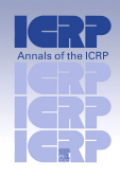
ICRP publication v. 109 Application of the commission's recommendations for the protection of people in emergency exposure s
The Commission's 2007 Recommendations re-state the principles of justification and optimisation, and the requirement to protect against severe deterministic injury, as applying to emergency exposure situations. For the purpose of protection reference levels for emergency exposure situations should be set in the band of typically 20 to 100 mSv effective dose (acute or in a year). The reference level represents the level of residual dose or risk, above which it is generally judged to be inappropriate to plan to allow exposures to occur. The Commission considers that a dose rising towards 100 mSv will almost always justify protective measures. Protection against all exposures, above or below thereference level, should be optimised. A more complete protection is offered by simultaneously considering all exposure pathways and all relevant protectionoptions when deciding on the optimum course of action in the context of an overall protection strategy. Such an overall protection strategy must be justified, resulting in more good than harm. In order to optimise an overall strategy, it is necessary to identify the dominant exposure pathways, the timescales over which components of the dose will be received, and the potential effectiveness of individual protective options. If, in application of an overall protection strategy, protection measures do not achieve their planned residual dose objectives, or worse, result in exposures exceeding reference levels defined at the planning stage, a reassessment of the situation is warranted. In both planning and in the event of an emergency, decisions to terminate protective measures should have due regard to the appropriate reference level.The change from an emergency exposure situation to an existing exposure situation will be based on a decision by the authority responsible for the overall response. This transition may happen any time during an emergency exposure situation and it may take place at different geographical locations at different times. The transfer should be undertaken in a coordinated and fully transparent manner and understood by all involved parties.Keywords: Emergency exposure situation, Reference level, Constrained optimisation, Protection strategy. INDICE: Abstract EditorialExecutive summary 1. Introduction 2. Scope of this advice 3. Objectives of protection in emergency exposure situations 4. Protection of emergency workers 5 Description of emergency exposure situations 6 Applying the Commission's System to emergency exposure situations 7. Arrangements for emergency exposure situations 8. Implementing protection strategies 9. Transition to rehabilitation References Annexes:A. Assessment of the contribution of different exposure pathways to the residual doseB. Characteristics of selected individual urgent protective measures C. Specific guidance for the termination of protective measures ADDITIONAL MATERIAL The history of ICRP and the evolution of its policies by Jack Valentin and Roger Clarke
- ISBN: 978-0-7020-4098-6
- Editorial: Elsevier
- Encuadernacion: Rústica
- Páginas: 120
- Fecha Publicación: 15/11/2009
- Nº Volúmenes: 1
- Idioma: Inglés
